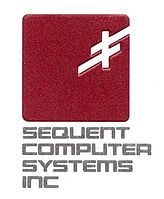This is a just a quick blog post to direct readers to the best Oracle-related paper detailing the value EMC XtremIO brings to Oracle Database use cases. I’ve been looking forward to the availability of this paper for quite some time as I supported (minimally, really) the EMC Global Solutions Engineering group in this effort. They really did a great job with this testing! I highly recommend this paper for readers who are interested in:
- Leveraging immediate, space efficient, zero overhead storage snapshots for productivity
- All-Flash Array performance
- Database workload consolidation
Click the following link to access the whitepaper: click here.  Abstract:
Abstract:
This white paper describes the deployment of the XtremIO® all-flash array with Oracle RAC 11g and 12c databases in both physical and virtual environments. It describes optimal performance while scaling up in a physical environment, the effect of adding multiple virtualized database environments, and the impact of using XtremIO Compression with Oracle Advanced Compression. The white paper also demonstrates the physical space efficiency and low performance impact of XtremIO snapshots.


Want to hear about future support for T10 Data Integrity Format/Data Integrity eXtensions myself, not double parity.
Great comparative analysis between EMC XtremIO 3.0 inline compression combined with the Oracle 12c ACO. I’ve been wondering just how much ACO compression levels were actually impacted by manipulation of the PCTFREE option. These findings appear to indicate that PCTFREE=0 is required in order to achieve maximum compressibility with Oracle 12c ACO. An overall 16.7 percent reduction in total physical space consumption on an all flash array sounds like a substantial overall flash storage savings for the archival of cold/historical table partitions.
Evidently, the Oracle 11gR2 (11.2.0.4) and Oracle 12c Data Pump COMPRESS option still requires that ACO be fully licensed in order to utilize that feature with the Oracle 11gR2/12c Data Pump utility. Ultimately, I guess it boils down to a total Oracle licensing cost per core evaluation versus the total flash storage savings cost/benefit analysis in order to determine if the total flash storage savings justify licensing the Oracle 12c ACO.
Or
Just how valuable is the actual volume of data that can be compressed and/or what level of table/index compression can actually be achieved?